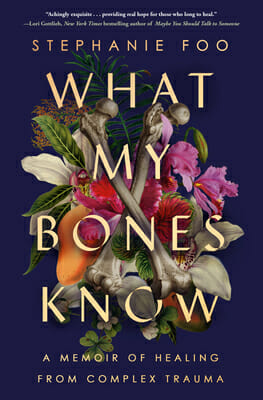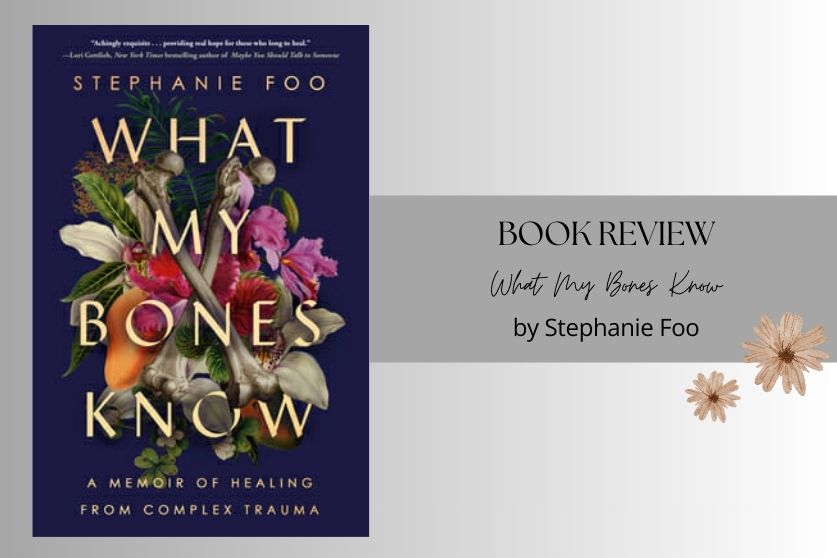Whenever I searched for information about trauma, toxic families, or inner-child healing, most of what I found felt purely theoretical. I craved someone I could truly relate to. Reading this book made me feel like, “I’m not alone in this journey.” It also opened my eyes to so many things I didn’t even realize were signs of deeper issues.
Stephanie describes everything so beautifully, it’s hard not to shed a tear or two while reading. For me, this was the best book I read in 2024. It marked the beginning of my healing journey and inspired me to keep going — diving deeper into this genre and discovering more stories like hers.
Sharing a quote from the book that changed something in me:
“Trauma isn’t just the sadness that comes from being beaten, or neglected, or insulted. That’s just one layer of it. Trauma also is mourning the childhood you could have had. The childhood other kids around you had. The fact that you could have had a mom who hugged and kissed you when you skinned your knee. Or a dad who stayed and brought you a bouquet of flowers at your graduation. Trauma is mourning the fact that, as an adult, you have to parent yourself.”
Summary of What My Bones Know
What My Bones Know is Stephanie Foo’s memoir about healing from complex PTSD.
(PTSD or Post Traumatic Stress Disorder occurs when you live through a traumatic experience. Complex PTSD, or C-PTSD, happens when that trauma repeats over many years — until it becomes part of who you are.)
At the beginning, Foo includes a trigger warning, encouraging readers to skip sections if they need to. Even with its tough moments, the book becomes easier to read and ends on a hopeful note.
The book is structured in five distinct parts — and the abuse she lived through is just one of them. Her healing journey, as you’ll see, was long and layered.
Foo grew up in San Jose, California, as the only child of two Malaysian immigrants of Chinese descent. She constantly found herself in the role of the “parent” — trying to please her emotionally unstable mother and avoidant father.
The abuse is shocking. Her mother would regularly beat her and pressure her to be better. Her father would threaten to crash the car and kill them both.
By her teenage years, Foo had been completely abandoned. She was left to survive alone in the house — and somehow, she did. She picked up the pieces, worked hard, and became a successful radio journalist and producer for This American Life.
From the outside, her life looked put together. But internally, she was unraveling — constantly triggered, never feeling good enough, and sabotaging her own relationships.
Eventually, Foo reached a breaking point. She quit her job to focus on her mental health full-time — something she acknowledges she was privileged to be able to do.
A Long Journey to Healing

Foo saw her first therapist in her early 20s. But it wasn’t until age 30 that she was diagnosed with C-PTSD. Again and again, therapists failed her — because complex PTSD is still misunderstood and rarely covered in traditional training.
Eventually, she found Dr. Ham and finally received a diagnosis. It was a relief — to have a name for the monster she’d been fighting all her life.
But the real healing was just beginning.
She interviewed neuroscientists and psychologists, joined trauma support groups, practiced yoga, tried experimental therapies, and even returned to her childhood home to fact-check her memories.
What helped the most was her work with Dr. Ham. He recorded their therapy sessions and played them back, helping her analyze her responses line by line. Through this, she discovered how and when her trauma responses kicked in — including her frequent dissociation, something she hadn’t been aware of before.
With time, she began to understand her mental and physical reactions. She slowly worked through the trauma embedded deep within her bones.
Generational Trauma
A study on mice showed that trauma could be inherited — mice developed a fear of a cherry blossom scent after their ancestors associated it with pain.
In her memoir, Foo links her own pain to generational trauma — like her grandfather’s imprisonment during the Malayan Emergency. Like many Asian-American families, the culture of silence and pressure to “endure” meant her parents never learned how to break the cycle.
Foo’s resilience and dedication to therapy offer hope and insight into how we can overcome inherited pain.
My Key Takeaways on What My Bones Know

What My Bones Know is a powerful and unforgettable read. As a journalist, Stephanie Foo takes her personal story and transforms it into something deeply investigative, thoughtful, and moving.
Her writing is honest, raw, and full of strength. What makes this book truly unique is not just the emotional depth, but the balance Foo strikes between vulnerability and rigorous research. She dives into the science, speaks with experts, and reflects with clarity — making her story resonate on many levels.
Foo doesn’t sugarcoat the healing process. She’s transparent about the ongoing nature of recovery, acknowledging that it’s not linear and that it takes constant work. But by the end, she’s not just getting by — she’s genuinely flourishing.
We witness her build a new life filled with love, community, and one of the most beautiful weddings I’ve ever read about. It made me reflect on my own life in ways I didn’t expect.
I’ve truly never come across a book quite like What My Bones Know.
It made me cry — from grief and from hope, from pure emotion.
I recommend this book wholeheartedly — especially to those on the healing journey, trauma, or memoir writing. You can find wisdom and inspiration in these pages.
This book holds so much truth and power. It’s one I know I’ll return to again and again.
Memorable Quotes from What My Bones Know
- “Hatred, I learned quickly, was the antidote to sadness. It was the only safe feeling. Hatred does not make you cry at school. It isn’t vulnerable. Hatred is efficient. It does not grovel. It is pure power.”
- “Just because the wound doesn’t hurt doesn’t mean it’s healed… Over the years I’d smoothed perfect white layers of spackle over gaping structural holes.”
- “No matter what I do, no matter where I try to find joy, I instead find my trauma… I will follow you. I will make you miserable forever. And then I will kill you.”
- “Being healed isn’t about feeling nothing. It’s about feeling the appropriate emotions at the appropriate times and still being able to come back to yourself.”
- “C-PTSD makes us think everything is our fault — not out of selfishness, but from the desperate need for control.”
- “Removing my parents from my life protected me, but it didn’t fix me… Now comes the hard part: replacing them.”
- “Pain is about feeling real, valid hurt. Suffering is when you add extra dollops to that pain — feeling bad about feeling bad.”
- “My PTSD always told me I was alone… But now, I know: that was a lie.”
